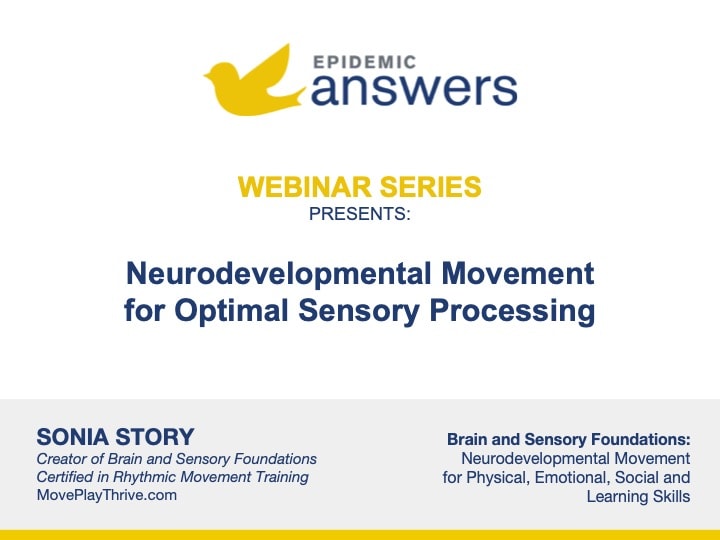Joye Newman explains why motor skills development from crawling, pulling up, walking and climbing are foundational for cognitive skills development in this blog post.
For many adults, exercise is a luxury. For children, however, physical activity isn’t a luxury; it’s the key building block for growth.
The motor skills of crawling, pulling up, walking and climbing are the foundation for the cognitive skills that school-age children are expected to acquire. For example, a child will be ready to read only after she has acquired the fine-motor skill of moving her eyes smoothly across a page (visual tracking).
She also requires the gross motor skills enabling her to sit still in a chair (balance) and to move each side of her body independently of the other (laterality). In reading, laterality facilitates the ability to move the eyes from left to right.
Foundational Motor Skills Are Critical to Cognitive Growth
The relationship between motor and cognitive skills can be viewed as a pyramid. Without a strong motor-skill base, a child cannot build or support higher-level cognitive functions. Successful motor development follows a distinct sequence. From birth through six years of age, when motor skill acquisition is most rapid, establishing fundamental skills is crucial.
Unstructured physical activity is wonderful for helping children gain foundational motor skills. At the playground, children can experiment with ways to use their bodies and perfect emerging skills. The playground alone, however, won’t provide all the movement experiences children need.
The parents of a preschooler who favors one piece of playground equipment should question whether he is getting enough varied experience. Does he just not like other equipment, or does he avoid it because of problems with balance, spatial awareness, motor planning or upper body strength?
Observing a preschooler’s difficulty climbing a jungle gym, I noticed his inadequate motor planning skills. As he struggled to reach the top, he was unsure in which direction to shift his weight, where to place his hands, and which arm to use to pull himself up.
I worked with this eager child on exercises that challenged him to plan lateral movement and the placement of his arms and legs. After several weeks he became a confident climber. This confidence transferred to other physical activities he had previously avoided.
Leap Ahead, Fall Behind
Parents are excited when their child attempts something new. A nine-month-old’s parents may try to encourage his interest in walking by holding his hands to steady him. However, they may delay his ability to walk independently by disrupting the natural sequence of motor skill development. To walk, children need their arms for balance and for feeling their way through space.
The same is true for the four-year-old who lobs a few tennis balls successfully over the net. Her parents’ encouragement could be counter-productive, for tennis requires advanced fine and gross motor skills.
Urged to perform at a level beyond their developmental stage, children may develop splinter skills, which are skills that haven’t developed in proper sequence. Because most skills develop, and cannot be taught, splinter skills don’t become fully integrated in a child’s skill set. The effects of out-of-sequence skill development may become obvious only when a child is expected to do such complex motor and cognitive activities as reading and writing.
Nine-year-old Sarah, for example, was having difficulty keeping up with her classmates. I learned that by first grade, she had refined her handwriting skills to a level beyond her developmental age.
Sarah’s handwriting was a splinter skill. The building blocks of bilateral integration, laterality, fine motor control and visual tracking weren’t fully established. In kindergarten, Sarah was praised for her handwriting; in third grade, she was expected to write for content as well as legibility. Because her brain was still concentrating on handwriting mechanics, she was unable to process third-grade material.
Encourage Your Child’s Motor Skills Development
Most children naturally enjoy physical activity, but sedentary activities increasingly compete for their attention. Computer games, mobile phones and videos are entertaining, and many have educational value. However, when it comes to classroom learning, kindergartners won’t be at a disadvantage if they haven’t mastered preschool computer programs. Children who aren’t offered adequate opportunities to develop motor skills may find it harder to build the cognitive skills needed for elementary school.
We can foster children’s motor skill development by offering them suitable movement experiences. We may enroll them in therapy or in movement programs specifically designed to strengthen basic skills. Children participate and benefit most if the activities are well planned, age-appropriate, and fun. Whether or not daily physical activity is a priority in your life, for young children, it’s a necessity.
Joye Newman is the founder and director of Kids Moving Company in Bethesda, MD. She also maintains a private perceptual motor therapy practice.
Still Looking for Answers?
Visit the Epidemic Answers Practitioner Directory to find a practitioner near you.
Join us inside our online membership community for parents, Healing Together, where you’ll find even more healing resources, expert guidance, and a community to support you every step of your child’s healing journey.




